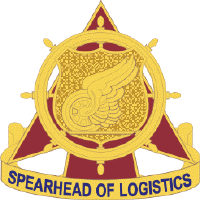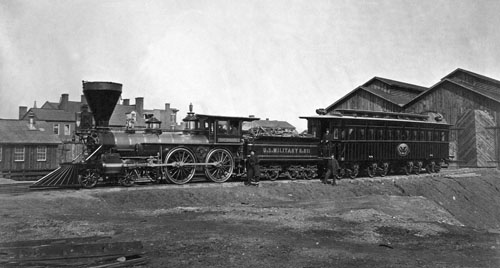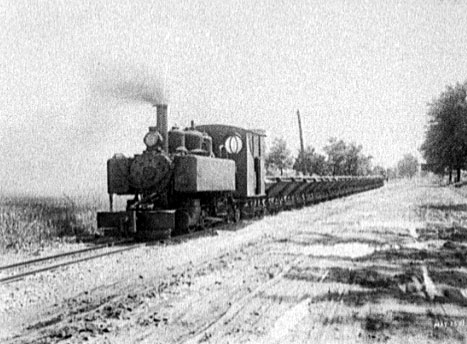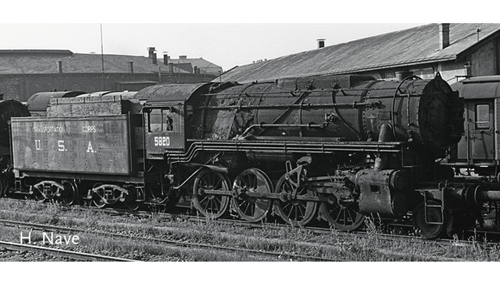

 STUART JORDAN gives an overview of the history of this branch of the American Army.
STUART JORDAN gives an overview of the history of this branch of the American Army.
Since the formation of the United States Army during the American War of Independence in the late 1770s, the logistical and transportation needs of the army were managed by the Quartermaster Corps and the Corps of Engineers. Although there were no railways at this time, these two parts formed the genesis of what would become the United States Army Transportation Corps (USATC) over one-hundred and fifty years later.

The Quartermaster Corps and the Corps of Engineers both stayed separate entities during the American Civil War in the 1860s, but this conflict did see the first widespread military use of an existing rail network to transport supplies and soldiers - although a purpose-built military railway was built by the British Army during the Crimean War to supply the troops besieging Sevastopol in 1855.
The US Army created the United States Military Railroad (USMRR) to manage railways and railway equipment captured from the Confederate States, and the USMRR was a definite precursor to the USATC.

USMRR 4-4-0 locomotive 'WH Whiton' in January 1865 with Abraham Lincoln's presidential car, which later was used as his funeral car after his assassination.
During the First World War the Quartermaster Corps managed wheeled vehicles and the deep-water fleet, and the Corps of Engineers looked after railroads and harbour craft.
Most of the armies fighting in the First World War ran narrow-gauge trench railways to supply the front lines with ammunition and food, and to bring casualties back to safety. The American Army was no exception.
Around 200 2-6-2T locomotives were built for the army for use overseas by the Baldwin Locomotive Works, and in total over 2000 flat cars, gondolas, tank and side-tipper wagons were built and shipped over to Europe. Such was the capacity of the American locomotive manufacturing industry that at the same time American Locomotive Company (ALCO) was supplying Narrow Gauge locomotives to the British and Russian armies, some of which can be found preserved on narrow-gauge railways such as the Ffestiniog Railway.

One of the Baldwin 2-6-2T locomotives built for war work, shown in service after the First World War.

USATC 2-8-0 S-160 Class Steam Locomotive, hundreds of which were built and used across Europe.
After the Japanese bombing of Pearl Harbor, Hawaii, on 7th December 1941, America entered the Second World War. A new army logistics branch was created in July 1942, completely separate from the Corps of Engineers and the Quartermasters Corps, taking control of the Army deep-water fleet, railroad management, and harbour management. The United States Army Transportation Corps was born.
The USATC managed supply and troop movement by railroad both in the US and overseas. 1500 locomotives and 20,000 wagons were built and sent across the Atlantic, some being used in North Africa to supply the port of Birzete in Tunisia which was the staging post for the Allied amphibious invasions of Sicily, Italy, and Southern France in 1943-44.
USATC locomotives were used to bolster the capacity of British railways in the build up to the D-Day landings before being sent to Ebbw Junction in Newport, Wales ready to be sent to France.
The greatest achievement of the USATC is thought of by many to be the rebuilding of the shattered rail network of Europe after the Second World War. France in particular had suffered immense damage, from both the advancing Allied army and the withdrawing German army. Locomotives and stock were distributed across Europe to Austria, Czechoslovakia, France, Germany, Greece, Hungary, Italy, Poland, the Soviet Union, Spain, Turkey and Yugoslavia.
As part of the United Nations Relief and Rehabilitation Administration, USATC locomotives were deployed in both China and South Korea, recently abandoned by Japanese forces. The Chinese locomotives found their way to North Korea, so ironically during the Korean War in 1950-53 both the North Koreans and the South Koreans/Americans were deploying USATC locomotives.
After the Korean War the USATC use of railroads became limited, with air transportation becoming more sophisticated and the changes in the nature of warfare.